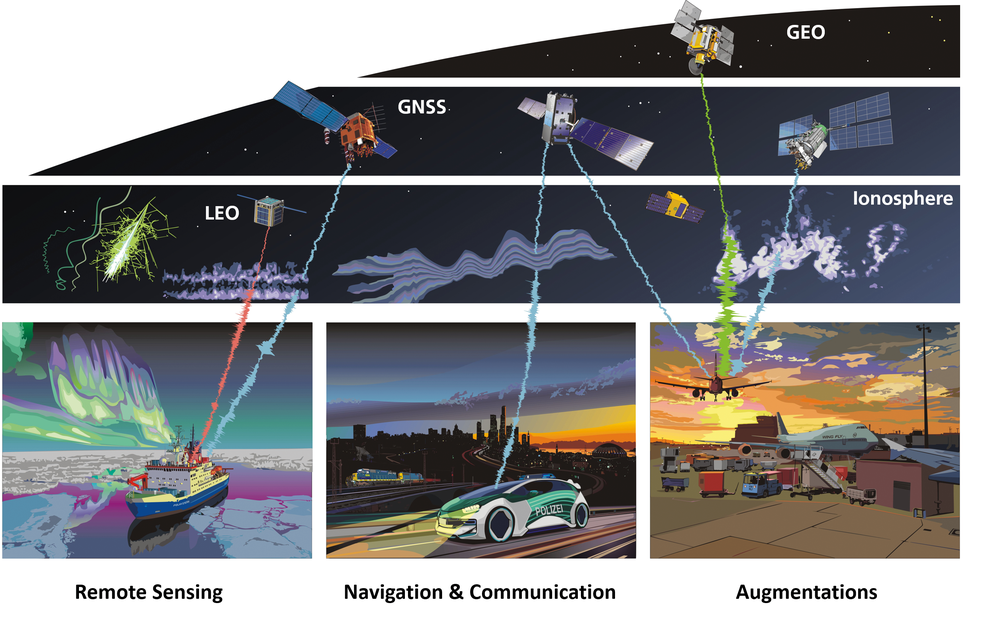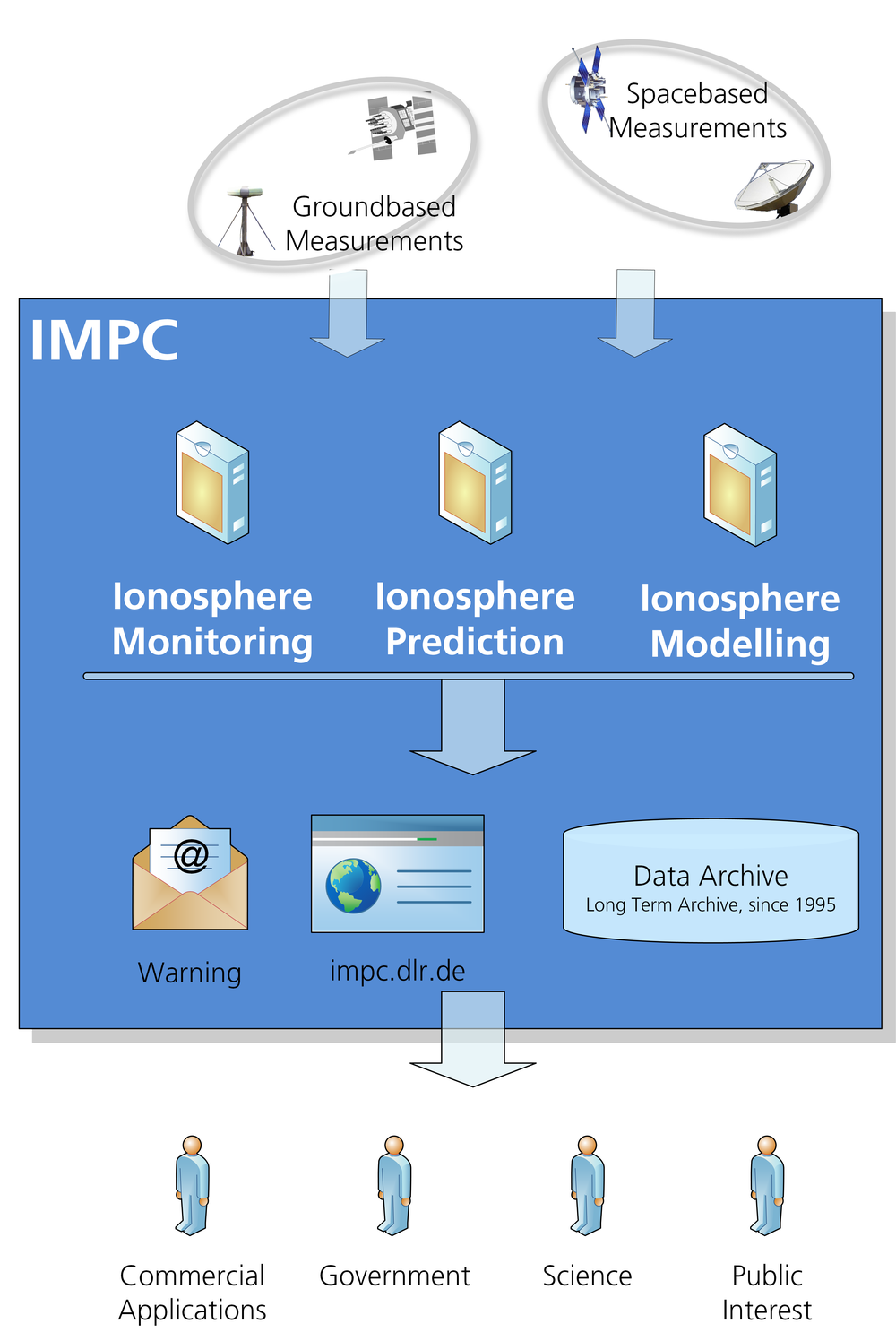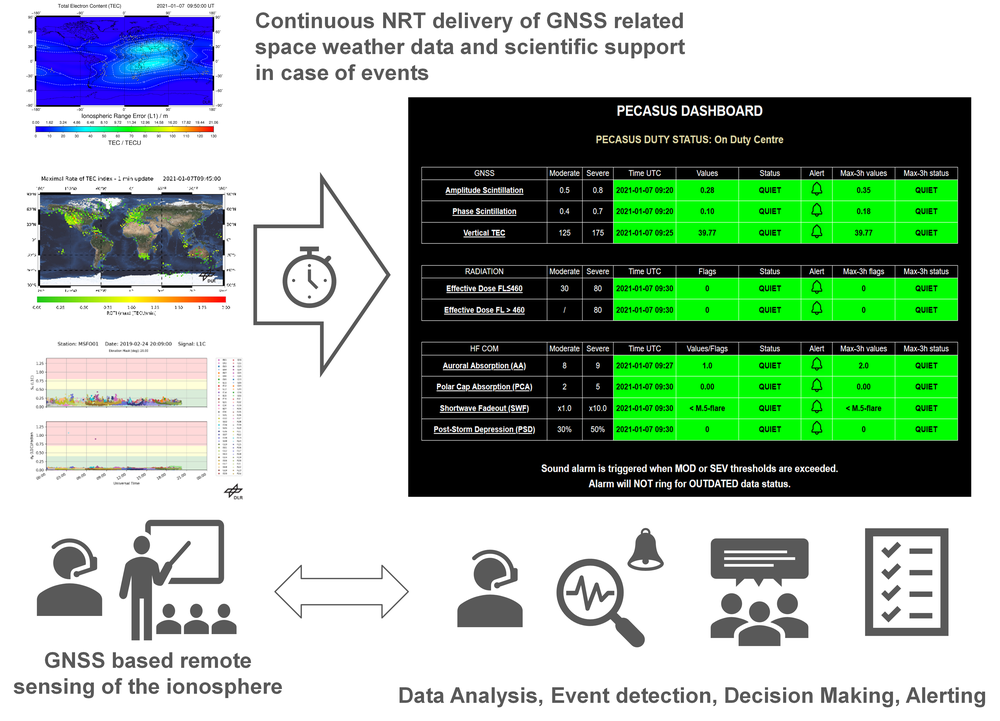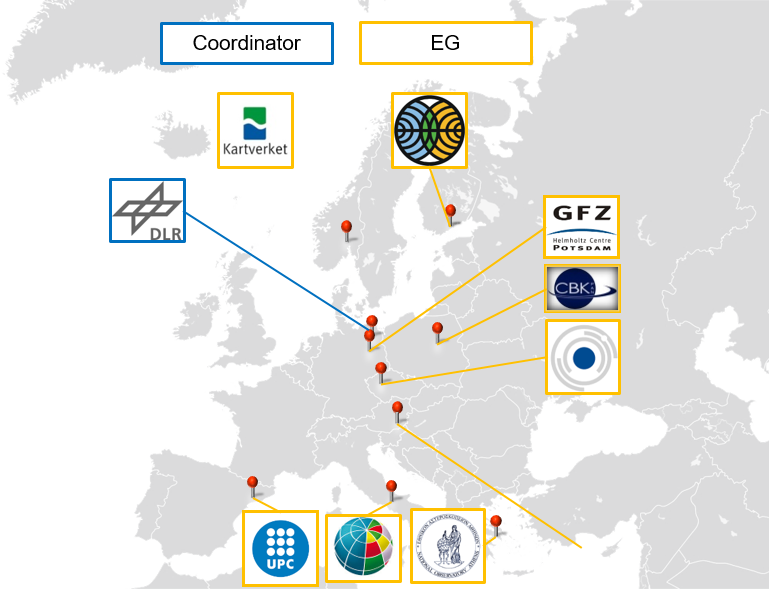Ionospheric Monitoring


Ionosphere Monitoring and Prediction Center
The performance of radio systems used for communications, navigation and remote sensing is affected by ionospheric variability. Ionospheric disturbances caused by space weather effects can degrade the accuracy, reliability and availability of Global Navigation Satellite Systems (GNSS). DLR's Ionosphere Monitoring and Prediction Centre (IMPC) provides a near real-time information and data service on the current state of the ionosphere, related forecasts and warnings. IMPC products are disseminated through the website impc.dlr.de.

PECASUS - Partnership for Excellence in Civil Aviation Space weather User Services
The PECASUS consortium is one of four global centers providing space weather advisories according to ICAO regulations. PECASUS started its 24/7 operations on 7. Nov, 2019. PECASUS is led by the Finnish Meteorological Institute (FMI) and includes ICAO Member States Finland, Belgium, United Kingdom, Austria, Germany, Italy, Netherlands, Poland, Cyprus and South Africa.
In the frame of PECASUS, the IMPC of DLR continuously provides tailored information on space weather conditions with potential impact on GNSS performance in aviation.

ESA-S2P-SWE (ESC Ionospheric Weather)
DLR is coordinating the Expert Service Center Ionospheric Weather (I-ESC) within the Space Weather segment of the ESA Space Safety Programme (S2P).
The I-ESC provides, implements and supports the Ionospheric and upper Atmosphere Weather products and capabilities of the ESA SWE network, including the observation, monitoring, interpretation, modelling and forecasting of Ionospheric and upper Atmosphere Weather conditions.

GNSS Performance Indicators (SWIGPAD)
One of the latest products provided by DLR's IMPC to the Expert Service Centre Ionospheric Weather (I-ESC) within the Space Weather segment of ESA's Space Safety Programme (S2P) is the GNSS Performance Indicator.
This product provides a user tailored GNSS performance indicator providing information on the expected impact of space weather on positioning at the user's location based on European (including high latitude) products together with global products distributed through the ESA SWE network available at swigpad.impc.dlr.de.

Neustrelitz Total Electron Content Model for Galileo
The Neustrelitz Total Electron Content Model (NTCM) is an empirical model which, in its NTCM-G variant, has been adapted to work with the effective ionization coefficients broadcast by Galileo. NTCM-G is a fully compatible algorithm for the calculation of ionospheric corrections for Galileo single frequency users. It provides a practical, cost-effective solution for determining the global TEC and is an alternative to the NeQuick-G algorithm.
